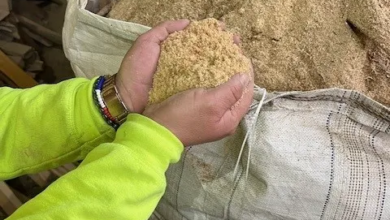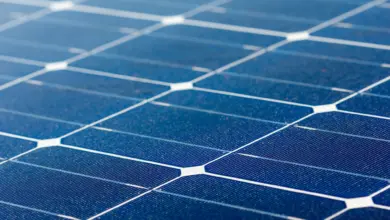Temporary Graphics: Here Today, Gone Tomorrow
Meeting the demand for short-term signage solutions.
Temporary graphics are the lifeblood of the signage industry. These types of short-term solutions include event graphics, retail special sales promotions, short term-wraps, and trade show graphics. In most cases, these displays are meant to last for two months or less and are easy to set up and takedown.
For example, event mesh banner is a great temporary signage option for outdoor events such as road races and marathons. Event mesh can be branded to reflect a special event with custom logos and coloring. Another temporary signage solution includes teardrop and wind flags, which can be placed roadside to attract passersby to the event or around registration tables or merchandise areas. These flags are lightweight and easy to set up and takedown, making it an excellent temporary signage option.
Right now the market is flooded with a plethora of lightweight, inexpensive substrates such as foam board, corrugated plastics, fabrics, mesh, magnetics, and more that are specifically designed for these applications.
Some of the most popular are available from many sources, so it’s a buyer’s market. Selecting the proper fabric is crucial to any successful temporary application, especially considering the range of applications and available printing methods.
Flexible & fashionable
Lily Hunter, product manager, textiles and consumables with Roland DGA, says that most graphics are temporary and constantly changing, just like the fashion industry. “New trends and the demands of clients/consumers require the ‘look’ of any space to be changed fairly often, especially within retail settings. Many printed products available, such as SEG (silicone edge graphics), posters, and banners, are easy to switch out without the need for professional installers.”
Hunter says that the best media for indoor temporary applications include vinyl, paper, fabrics, and banners. She added that most of these materials are also fine for outdoor use, as are rigid substrates like metal, wood, boards, etc.
A wide variety of applications
“Many print service providers are utilizing digital to produce P.O.P., P.O.S., and directional signage for events and short-term needs,” adds Michael Maxwell, senior manager at Mimaki USA. “Many PSPs are taking advantage of the advancements in ink technology, such as UV-LED curable, to take on more work and address faster turnaround to clients.”
He points out that he is seeing more PSPs that have adopted dye-sub for temporary projects. “Dye-sub fabrics are even easier to ship, can be produced relatively quickly, inexpensively, and are easy for customers to install with the introduction of more advanced framing systems. These framing systems allow a small silicone bead to be sewn into the fabric, which allows the customer to install in a very short time frame with little effort. This is perfect for trade show exhibits and advertising efforts in high-traffic areas, such as airports and malls, where the messaging will be changed regularly.”
Maxwell says that virtually any media will work in an indoor environment. “A wide variety of media is now offered with exterior capabilities; however there are some exceptions, such as canvas, wall-coverings, etc. These exceptions tend to fall in more decorative areas like home furnishings.”
He says depending on the machine architecture, roll versus rigid becomes a topic of discussion, but overall media compatibility has greatly improved across all technologies. There are core categories to consider though. For example, PVC-based goods depending on their intended application are suitable for solvent, UV-LED curable, and latex inks. Dye-sub printers are limited to polyester-based goods, but these could be fabric, or rigid materials (e.g., phone cases). The advancements of both ink and media and the cross-functionality of each have widened the capabilities across the entire market.”
Maxwell says that the most versatile ink with the most potential is currently UV-LED curable. “With this technology, virtually any surface becomes printable and opens up a whole new world of potential media, such as wood, metal, and glass, in addition to the standard media already widely adopted by PSPs.”
He adds working with these inexpensive printable materials such as foam board and corrugated plastic are ideal for this market. “Many PSPs tend to produce temporary signage on corrugated plastic and foamboard as a standard. Both are easy to apply adhesive-backed PVC to or print directly to with UV-LED curable printers. Additionally, these are easy to cut, either manually or digitally, and can be shipped easily.”
Polyester-based goods are another rapidly growing segment for digitally printed goods.
Maxwell adds, “We have experienced an increased demand for our vast dye-sub offering, but our most popular technology is currently UV-LED curable. With UV-LED curable printers, Mimaki customers are producing short-run temporary graphics on traditional materials and also some fabrics. Since the media companies are diversifying their products, Mimaki has been able to expand capabilities within the UV-LED curable space to enable PSPs to not only produce stickers, decals, banners, wayfinding, etc. but also address backlit and fabric-based needs. This versatility creates an opportunity for our customers to utilize a single technology for many applications with little or no trade-off from the standard adopted technologies often associated with the media of choice.”
Another interesting media option for this market comes from the Youngstown, Ohio-based Photo Tex Group that makes an interesting adhesive-backed printable fabric material that’s easily removed.
Walter Gierlach Jr., the owner of Photo Tex Group, says that temporary graphics has transformed over the past few years into home décor with custom graphics, murals, and decorated kids rooms that can be changed with time or as they age. “We are also seeing the trending of photography and fine arts sector using material such as our Photo Tex fabric in art and museum displays. With the constant upgrade of printers and our media, shops can print beautiful images and display them in public arenas or museums and safely remove the material by themselves.”
He adds that the company has seen an increase in latex and UV inks for applications like event graphics, special sales promotions, and short-term graphics.
A message that attracts attention
Magnetic signs continue to grow in popularity as sign shops and their clients find new and creative ways to deploy them. Car magnets, menu boards and retail wall graphics are just a few of the uses clients are coming up with for magnetic or magnetic-receptive materials.
Mike Gertz, marketing manager for Master Magnetics in Castle Rock, Colorado, notes that using magnets for temporary graphics has been around for a long time and are still popular and trending.
“Flexible magnetic sheeting for uses such as vehicle graphics, calendars, sports schedules, and business cards are always in big demand.”
Gertz reports that the use of magnetic graphic systems-magnetic and magnetic receptive sheeting is a more recent trend for temporary graphics. “There are many applications for this effective and cost-efficient method for a graphic presentation with frequently changing information or images. Uses include retail P.O.P. displays, restaurant menu boards, trade show graphics, wayfinding signage, event graphics, business and hospitality lobbies and wall graphics and much more.”
He adds that valuable accessories to other printable substrates for temporary graphics are magnetic fasteners such as magnetic hooks and “carabiners” for vinyl banners, or magnetic strip for quick attaching and removing of graphics printed on other substrates. “Probably the most popular and practical temporary signs that many sign shops create are vinyl banners with grommets. Magnetic carabiner hooks make vinyl banners easy to install, reposition, and remove. Magnetic sign holders are perfect for retail signage, which is almost all temporary, because of the ease of repositioning without having any other fasteners or need for drilling holes.”
Great indoors and out
Getz says that magnets work great for both indoor and outdoor applications. “For outdoors, if a flexible magnetic base with adhesive is needed, be sure an acrylic adhesive is being used to withstand the outdoor elements. Solvent, eco-solvent, UV and latex ink systems all can print on magnetic and magnetic receptive sheeting with vinyl or coated topcoat printable surfaces. Aqueous inks can print on magnetic and magnetic receptive sheeting with paper or PP-coated printable surfaces.”
It’s important to be aware that “inexpensive” and “temporary” doesn’t have to mean settling for cheap, flimsy, or low quality because the graphic only needs to last for a short period of time.
“The main benefits of printable magnetic and magnetic receptive sheeting are simplicity, high-resolution print quality and durability,” adds Getz.
He says that when looking at simplicity, the printing process has evolved from a two-step process of printing on vinyl or another substrate and laminating to the magnet, to the simpler and faster process of printing directly to the magnet. “One potential obstacle for printing magnetic sheeting is if the platen is metal, which would prohibit the smooth flow through the printer since the magnet would attract to the metal. This is easily overcome by covering the platen with styrene, chipboard, vinyl or another smooth, flat material – anything to create an air gap between the metal and the magnet, which then allows the magnetic sheeting to feed smoothly through the printer. Magnetic receptive sheeting prints as easily as any other substrate, adjusting as needed for the thickness and weight. For installation and removal, whether it’s for vehicle signs or a P.O.P. display, all you have to do is place or roll it into position, and then peel off to remove.”
Print quality is also a key thing to consider. Getz says, “The visual impact of the graphics created is the same as most other printable substrates. If you have high-quality images at the correct resolution for the output size, printing on magnetic and magnetic-receptive sheeting will result in brilliant, accurate color reproduction with precise clarity.”
He adds that the third factor is durability. “If properly cared for and stored, the magnet or magnetic receptive finished graphic can be reused for years. The magnetism of flexible magnets is permanent and will never lose its attracting power when used in the correct temperature ranges (-15° F to 160° F) and doesn’t come in contact with powerful magnets such as ceramic or neodymium magnets that could alter the magnetic poles of the flexible magnet.”
Magnetic and magnetic-receptive sheeting works well for retail P.O.P. displays, restaurant menu boards, trade show graphics, wayfinding signage, event graphics, business and hospitality lobby, and wall graphics. “The system can be applied directly to a wall or can be mounted to a thin rigid substrate such as foam board, corrugated plastic, Gatorboard or Sintra, and then mounted to a wall or used as a free-standing display.”
What are you looking to achieve?
Hunter says media selection for this market really depends on the media you’re using and the look you’re trying to achieve. “Dye-sublimation is best for soft signage applications, and for creating signage using rigid substrates (aluminum, steel, or natural wood). Dye-sublimated fabrics can be washed, steamed/ironed, and reused after storage.”
She adds that banners, various types of paper, and pressure-sensitive vinyl are also popular. “These can be printed with eco-solvent and UV inks. There are economy-grade products for short-term applications (periods of up to six months), as well as medium-grade products for applications of up to two years. Typically, most people will switch out their graphics or ‘change up their look’ within two years.”
Hunter adds that most of the banner work, or “economy-grade” work, is not done with UV printers because they don’t offer the print speeds required. “Eco-solvent inkjets are ideal for these types of jobs.”
She adds that UV printers are great for printing on foam board, corrugated plastic, and other rigid materials as they print directly onto the surface of the substrate, eliminating the ‘print and mount’ step and saving the PSP time as well as money.








